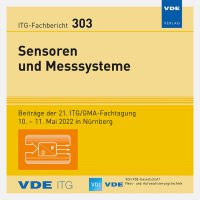Planar mapping of the liquid fraction of froth using ultrasound
Konferenz: Sensoren und Messsysteme - 21. ITG/GMA-Fachtagung
10.05.2022 - 11.05.2022 in Nürnberg
Tagungsband: ITG-Fb. 303: Sensoren und Messsysteme
Seiten: 4Sprache: EnglischTyp: PDF
Autoren:
Emmerich, Hannes; Weik, David; Buettner, Lars; Czarske, Juergen (Technical University Dresden, Laboratory of Measurement and Sensor System Techniques, Dresden, Germany)
Knuepfer, Leon (Helmholtz-Zentrum Dresden-Rossendorf, Institute of Fluid Dynamics, Dresden, Germany)
Trtik, Pavel (Paul Scherrer Institut, Laboratory for Neutron Scattering and Imaging, Villigen, Switzerland)
Eckert, Kerstin; Heitkam, Sascha (Helmholtz-Zentrum Dresden-Rossendorf, Institute of Fluid Dynamics, Dresden & Technical University Dresden, Institute of Process Engineering and Environmental Technology, Dresden, Germany)
Starke, Eric (SICK Engineering GmbH, Ottendorf-Okrilla, Germany)
Inhalt:
Flotation processes are essential processes for resource separation, the monitoring of which can save vast amounts of water and energy. To control them, it is necessary to measure the phase fractions present in the froth. Currently, no suitable measurement method exists that can be easily integrated into the existing process and has a penetration depth of more than 5 cm. Therefore, in this paper we present a measurement system for determining the liquid distribution in foam using ultrasound. To counteract the strong attenuating effect of the foam on the ultrasound, we use low-frequency probes with a center frequency of 135 kHz. Electrodes determine an integral liquid fraction by conductivity measurement. Within a liquid range of 0.17 x 10(exp −2) to 0.82 x 10(exp −2), the measurement system was first calibrated for a penetration depth of 9.2 cm and validated by simultaneous neutron imaging. An absolute and relative measurement uncertainty of 0.23 x 10(exp −2) and 42.5% was the respective result. A resolution of 7.5mm in the axial, 13mm in lateral direction and 1 Hz in time were obtained. In a dynamic inhomogeneous case, the measurement system was additionally validated for a use case. This investigation represents a first step towards process optimization in flotation processes.


